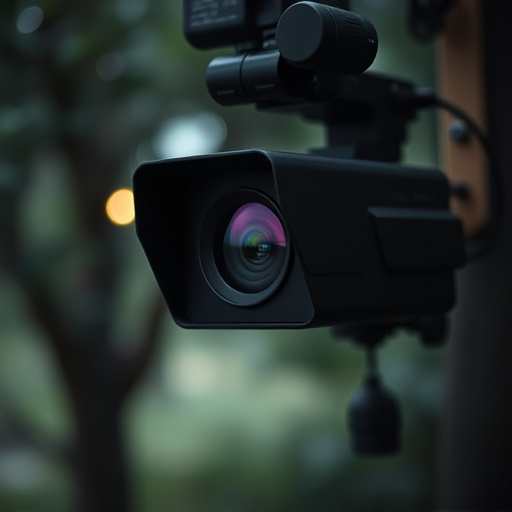In today's digital age, mini surveillance cameras (hidden cameras) disguised as everyday objects pose a significant privacy concern in apartments. This guide equips tenants and property managers with knowledge on identifying RF-enabled hidden cameras. It emphasizes the importance of radio frequency (RF) detection techniques using specialized equipment to locate and neutralize unauthorized wireless transmissions. The multi-step approach involves visual inspections, using tools like RF detectors and thermal imaging cameras, and securing digital devices through software updates and encryption for comprehensive apartment security against mini surveillance cameras.
Uncover the insidious world of hidden cameras with our comprehensive guide on detecting Mini Surveillance Cameras in apartments using Radio Frequency (RF) technology. In an era where privacy is paramount, understanding these tiny but powerful tools is essential. This article provides a detailed breakdown of RF detection techniques, equips you with necessary tools and equipment, and offers practical steps to ensure your home remains secure from these covert devices. Say goodbye to hidden threats and take charge of your apartment’s safety.
- Understanding Mini Surveillance Cameras: A Brief Overview
- Radio Frequency (RF) Detection Techniques for Hidden Cameras
- Tools and Equipment Required for Effective RF Camera Detection
- Practical Steps to Detect Hidden Mini Surveillance Cameras in Apartments
Understanding Mini Surveillance Cameras: A Brief Overview
Mini Surveillance Cameras, also known as hidden cameras, have become increasingly sophisticated and compact, making them a common concern in modern living spaces, especially apartments. These tiny devices are designed to go unnoticed, often disguised as everyday objects like smoke detectors, power outlets, or even plants. With their advanced radio frequency (RF) capabilities, they can transmit video feeds wirelessly to a receiver, providing remote access to those with malicious intentions.
In the context of apartments, understanding how these mini surveillance cameras operate is crucial for tenants and property managers alike. Given their hidden nature, it can be challenging to detect them without specialized knowledge and equipment. This guide aims to provide insights into identifying potential hidden cameras, focusing on RF-enabled devices, to ensure privacy and security in apartment settings.
Radio Frequency (RF) Detection Techniques for Hidden Cameras
Radio Frequency (RF) detection techniques play a pivotal role in uncovering hidden cameras, especially in sensitive areas like apartments. One of the primary methods involves scanning for unusual RF signals that deviate from typical household electronics. Mini surveillance cameras for apartments often operate on specific frequencies, making them detectable with specialized equipment. By identifying and analyzing these unique signals, individuals can pinpoint the location of covert cameras.
Advanced RF detectors are designed to capture and interpret these signals, offering a discreet and effective way to ensure privacy. These devices can detect hidden cameras by identifying unauthorized wireless transmissions. With the right tools, one can effectively search for and neutralize such devices, fostering a safer environment for tenants and residents concerned about their personal space.
Tools and Equipment Required for Effective RF Camera Detection
Detecting hidden cameras, especially miniature surveillance devices used in apartments, requires specific tools and equipment to ensure effectiveness. The primary tool is a radio frequency (RF) detector, capable of picking up signals from cameras operating on RF bands. These detectors range from handheld devices to more advanced, portable setups with enhanced sensitivity. Additionally, a signal amplifier can boost weak signals, expanding the detector’s range.
For visual confirmation and analysis, professionals often employ a high-gain antenna connected to an oscilloscope or spectrum analyzer. This combination allows them to identify specific frequencies used by hidden cameras and even track their location within a building. Furthermore, a digital camera with infrared capabilities can capture images of the camera’s lens reflex, providing physical evidence of its presence.
Practical Steps to Detect Hidden Mini Surveillance Cameras in Apartments
Detecting hidden mini surveillance cameras in apartments has become a pressing concern for tenants worldwide. While advanced technology makes it easier to identify these devices, prevention and detection require a multi-step approach. Start by conducting regular visual inspections of walls, ceilings, and door frames. Look for any unusual markings, screws, or devices that don’t belong. Check common hiding spots like power outlets, light fixtures, and behind mirrors.
Next, use specialized tools designed to detect radio frequency (RF) signals emitted by hidden cameras. Handheld RF detectors can help identify active surveillance equipment within a certain range. Additionally, employ thermal imaging cameras to visualize heat signatures that may indicate the presence of hidden devices. Regularly update security software on your personal devices and ensure network encryption for added protection against remote access by unauthorized camera operators.
Detecting hidden mini surveillance cameras in apartments has become a necessary skill due to the growing prevalence of covert recording devices. By utilizing radio frequency (RF) detection techniques and the right tools, residents can ensure their privacy and safety. Understanding the subtleties of these tiny cameras and employing practical steps outlined in this guide equips folks with the knowledge to navigate this modern-day enigma. With a little know-how, you can rest assured that your home remains a private sanctuary, free from unsanctioned observation.
